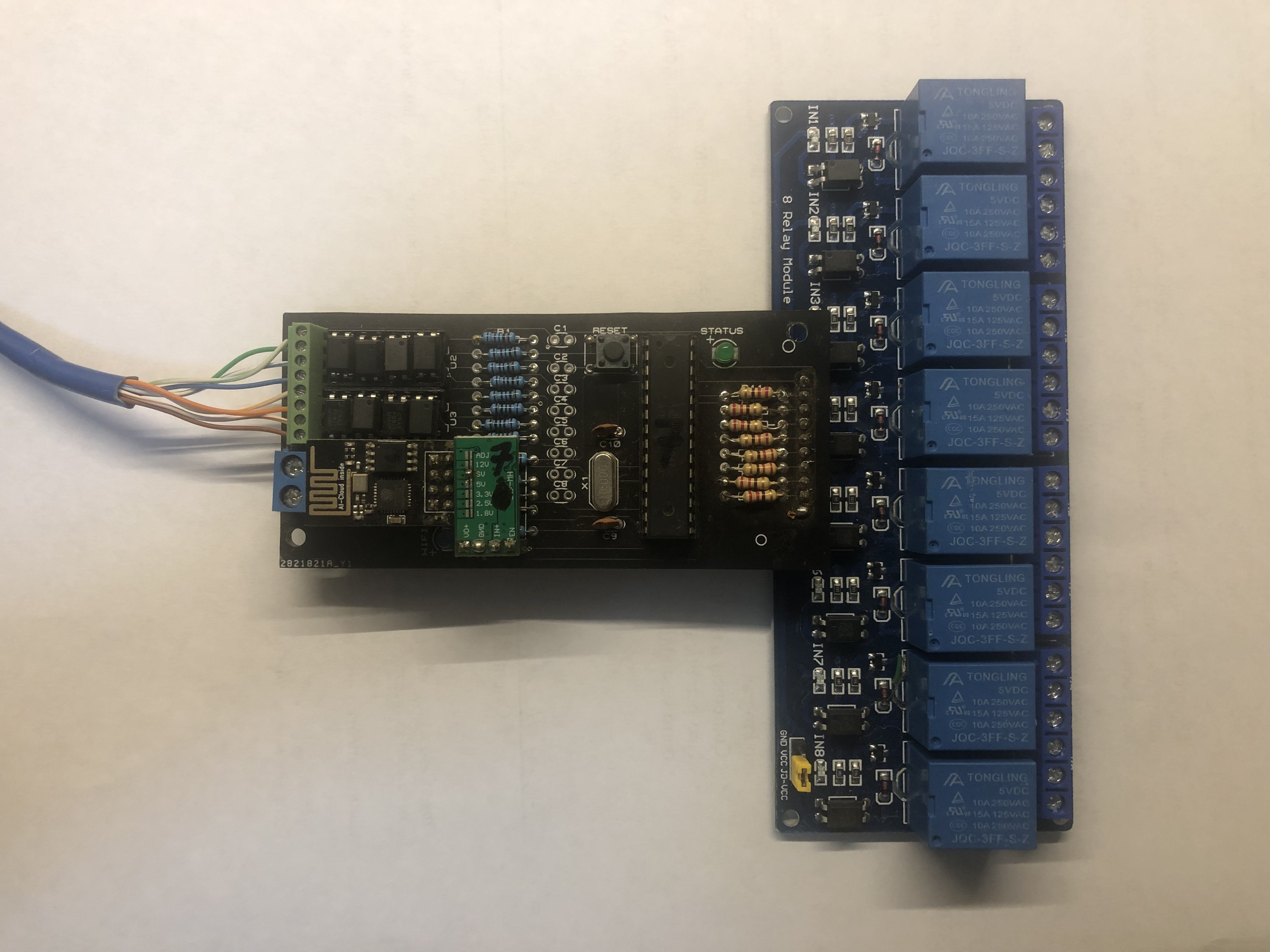High Density And Fine Grained PCB Traces
Published on 12/27/2018 9:19:33 AM
Description
<p> <span style="font-family:"font-size:18px;"><span style="font-family:"font-size:18px;">At present, PCB products are moving from traditional to higher density </span><strong><a href="https://www.allpcb.com/sns/hdi_84/" target="_blank"><span style="font-family:"font-size:18px;">HDI</span></a><span style="font-family:"font-size:18px;">/BUM board</span></strong><strong><span style="font-family:"font-size:18px;">s</span></strong><span style="font-family:"font-size:18px;">, IC package base boards, embedded component boards and rigid-flex boards. <span style="font-family:"white-space:normal;">PCBs</span><span style="font-family:"font-size:18px;white-space:normal;"> </span>wil</span></span><span style="font-family:"font-size:18px;">l eventually go to "printed circuit boards". The limit, in the end, will inevitably lead to the "quality change" from the "electrical transmission signal" to the "</span><strong><span style="font-family:"font-size:18px;">optical transmission signal</span></strong><span style="font-family:"font-size:18px;">", replacing the printed circuit board with the </span><strong><span style="font-family:"font-size:18px;">printed optical circuit board.</span></strong> </p> <p> <span style="font-family:"font-size:18px;"> </span> </p> <p> <span style="font-family:"font-size:18px;">Due to the miniaturization, high performance, multi-function of electronic products and the rapid development of high-frequency (speed) signal transmission, PCBs must be rapidly moved from the traditional PCB industry to products characterized by high density and refinement. development of. PCB products have begun, partially or fully integrated into high-density interconnect laminate (HDI/BUM) boards, package-based (loaded) boards, integrated (embedded) <a href="https://www.allpcb.com/component_placement_rules.html" target="_blank">component printed boards</a> (ICPCB), and rigid-flexible printing Board (G-FPCB).</span> </p> <p> <span style="font-family:"font-size:18px;"> </span> </p> <p> <span style="font-family:"font-size:18px;">In the future, these four PCB type products will become the four bright spots in the PCB industry, and the more advanced printed optical circuit boards with "light signal" transmission and calculation will replace the current "electric signals". Transmission and calculation of printed circuit boards.</span> </p> <p> <span style="font-family:"font-size:18px;"> </span> </p> <p> <span style="font-family:"font-size:18px;">HDI/BUM board core board production value accounted for 95%.HDI/BUM boards are PCBs with higher density than conventional printed boards. They can be divided into HDI/BUM boards with “core board” and “core board”.</span> </p> <p> <span style="font-family:"font-size:18px;"><br /> </span> </p> <p style="text-align:center;"> <span style="font-family:"font-size:18px;"><img alt="" src="https://file.allpcb.com/bbs/18/12/27/090316101.png" /><br /> </span> </p> <p> <span style="font-family:"font-size:18px;"> </span> </p> <p> <span style="font-family:"font-size:18px;">A "core board" HDI/BUM board is a PCB formed by a higher density of interconnected "layers" on one or both sides of a "conventional printed board". In fact, cored HDI/BUM boards are a form of "conventional printed board" "transition" to higher density PCBs to meet the requirements of very high density installations. At the same time, regardless of equipment, process technology and management, it can better adapt to the best way for the original PCB industry to transition to very high-density PCB products.</span> </p> <p> <span style="font-family:"font-size:18px;"> </span> </p> <p> <span style="font-family:"font-size:18px;">If it can be developed and produced on the basis of existing <a href="https://www.allpcb.com/pcb_production" target="_blank">PCB production</a> equipment, testing and technology, it can be developed and produced with low investment, low cost, good continuity and expansion in management and production, and thus is greatly Most PCB manufacturers accept, so the HDI/BUM board with core board accounts for about 95% of the current HDI/BUM board production value.</span> </p> <p> <span style="font-family:"font-size:18px;"> </span> </p> <p> <span style="font-family:"font-size:18px;">The HDI/BUM board with core board is significantly more prominent in its high density, such as the 4+12+4 200×300cm2 HDI/BUM board compared to the 400×450 cm2 46-layer buried/blind hole high-rise. The board has higher capacity, better electrical performance and reliability and longevity.</span> </p> <p> <span style="font-family:"font-size:18px;"> </span> </p> <p> <span style="font-family:"font-size:18px;">At present, most of the HDI/BUM boards without "core board" are made of conductive adhesive technology, and their use range is limited, so the proportion is small.</span> </p> <p> <span style="font-family:"font-size:18px;"><br /> </span> </p> <p style="text-align:center;"> <br /> </p> <p style="text-align:center;"> <img alt="" src="https://file.allpcb.com/bbs/18/12/27/090524989.png" /> </p> <p> <span style="font-family:"font-size:18px;"><strong><br /> </strong></span> </p> <p> <span style="font-family:"font-size:18px;"><strong> I</strong></span><span style="font-family:"font-size:18px;"><strong><span style="font-family:"font-size:18px;">C</span></strong><strong><span style="font-family:"font-size:18px;"> package substrate solves the most important problem of CTE matching</span></strong></span><span style="font-family:"font-size:18px;">.</span> </p> <p> <b></b> </p> <p> <span style="font-family:"font-size:18px;"> </span> </p> <p> <span style="font-family:"font-size:18px;">The IC package substrate has been developed by "deepening (high density)" based on the HDI/BUM board, or the IC package substrate is a higher density HDI/BUM board. In essence, the primary problem with IC package substrates is the problem of matching (compatibility) with the CTE (thermal expansion coefficient) of the package elements to be packaged, followed by the problem of high density.</span> </p> <p> <span style="font-family:"font-size:18px;"> </span> </p> <p> <span style="font-family:"font-size:18px;">In essence, the PCB provides interconnect and mechanical (physical) support for the components. In today's electronic packaging market, there are three main types of packages: (1) organic substrate packaging; (2) ceramic substrate packaging; (3) ideal size and speed (ie chip level) packaging, such as crystal Wafer Level Package (WLP, Wafer Level Package), Direct Die Attach (DDA). It is clear that conventional PCBs do not have the capability of these advanced packages (low CTE applications), so the PCB industry must develop technologies and products that enable these advanced package substrate materials.</span> </p> <p> <span style="font-family:"font-size:18px;"> </span> </p> <p> <span style="font-family:"font-size:18px;">CTE matching (compatibility) issues between package substrate and package element (group). When the CTEs of the two do not match or vary greatly, the internal stress generated after soldering and packaging threatens the reliability and life of the electronic products. Therefore, the CTE matching (compatibility) problem between the package substrate and the packaged component (component) is requiring that the CTE difference between the two is becoming smaller as the mounting density is increased and the solder joint area is reduced.</span> </p> <p> <span style="font-family:"font-size:18px;"> </span> </p> <p> <span style="font-family:"font-size:18px;">The IC package substrate is mainly embodied in: The CTE of the substrate material is smaller or matched, that is, the CTE of such an IC substrate is significantly reduced, and the CTE of the chip pin is close (compatible) to ensure reliability; For the package of bare chip (KGD), it is required to increase the density of the IC substrate.</span> </p> <p> <span style="font-family:"font-size:18px;"> </span> </p> <p> <span style="font-family:"font-size:18px;">The thickness of the package substrate is thin and the size is small, most of which is less than 70mm×70mm. Most of the thin-type low CTE substrates are used, such as PI material, ultra-thin fiberglass cloth and carbon fiber CCL material.</span> </p> <p> <span style="font-family:"font-size:18px;"> </span> </p> <p> <b><span style="font-family:"font-size:18px;">Integrated Component PCB Embedded in Active Passive Components is the Way Out</span></b><b><span style="font-family:"font-size:18px;">.</span></b><b></b> </p> <p> <span style="font-family:"font-size:18px;"> </span> </p> <p> <span style="font-family:"font-size:18px;">With the development of high-density electronic products, high-frequency signal transmission and high-speed digitalization, the increase in the number of I/O chips and the rapid increase in the number of passive components have increasingly affected the reliability and transmission of electronic products. Signal integrity, the way out is toward integrated (embedded) component printed boards.</span> </p> <p> <span style="font-family:"font-size:18px;"> </span> </p> <p> <span style="font-family:"font-size:18px;">Development steps: integration (embedded) passive components (mainly capacitors, resistors and inductors) - → integrated (embedded) active components (IC components).</span> </p> <p> <span style="display:none;"></span> </p> <p> </p> <p> <span style="font-family:"font-size:18px;">1. </span><b><span style="font-family:"font-size:18px;">Buried Passive Components</span></b><b></b> </p> <p> <span style="font-family:"font-size:18px;"> </span> </p> <p> <span style="font-family:"font-size:18px;">The number of passive components has increased rapidly. The number of passive components will increase rapidly with the increase in IC component integration (or I/O count), high-frequency signal transmission, and high-speed digitization (assembled active/passive components are 1:10—→ 1:20—→1:30—→1:50). </span> </p> <p> <span style="font-family:"font-size:18px;"> </span> </p> <p> <span style="font-family:"font-size:18px;">Passive components occupy more and more board area (30%→40%→50%→70%), affecting high density; soldering points of passive components It is also increasing, affecting the reliability of the connection, because the solder joint is one of the main faults of electronic products. The ratio of various element (group) pieces of conventional assembly is shown in the table.</span> </p> <p> <span style="font-family:"font-size:18px;"> </span> </p> <p> <span style="font-family:"font-size:18px;">The increase in passive components is bound to cause problems. The increase of passive components has led to more and more solder joints, and the welding reliability is getting lower and lower. The solder joints have always been the biggest failure rate of electronic products; the electromagnetic interference generated by the loop formed by passive components is becoming more and more serious. </span> </p> <p> <span style="font-family:"font-size:18px;"> </span> </p> <p> <span style="font-family:"font-size:18px;">The increase in source components increases the board size (area) and the like, which adversely affects high frequency and high speed digital transmission performance.</span> </p> <p> <span style="font-family:"font-size:18px;">The use of buried passive components eliminates these effects and significantly improves the integrity and reliability of the transmitted signal.</span> </p> <p> <span style="font-family:"font-size:18px;"> </span> </p> <p> <span style="font-family:"font-size:18px;">The buried passive components can be divided into: embedded a single passive component; buried "integrated" (combined capacitors, resistors, etc.) passive components.</span> </p> <p> <span style="font-family:"font-size:18px;"> </span> </p> <p style="text-indent:0pt;margin-left:0pt;mso-para-margin-left:0.0000gd;mso-char-indent-count:0.0000;mso-list:l0 level1 lfo1;"> <span style="font-family:"font-size:18px;">2. </span><b><span style="font-family:"font-size:18px;">Buried Embedded Components.</span></b><b></b> </p> <p> <span style="font-family:"font-size:18px;"> </span> </p> <p> <span style="font-family:"font-size:18px;">While embedding passive components, embedded embedded components (various IC components) are in the process of development and trial use, and are the road to future development.</span> </p> <p> <span style="font-family:"font-size:18px;"> </span> </p> <p> <span style="font-family:"font-size:18px;">The growth rate of rigid-flexible printed boards will accelerate in the future</span> </p> <p> <span style="font-family:"font-size:18px;">In 2006, the output value of flexible (including rigid-flexible) printed boards accounted for 17% of the total output value of PCBs. In the future, there will be a faster increase. By 2010, it is expected to reach 25%-30%.</span> </p> <p> <span style="font-family:"font-size:18px;"> </span> </p> <p> <span style="font-family:"font-size:18px;">The structure of the rigid-flexible printed board can be varied. The following figure shows the typical two-generation products.</span> </p> <p> <span style="font-family:"font-size:18px;"> </span> </p> <p> <span style="font-family:"font-size:18px;">The advantages of rigid-flexible printed boards are many, but the most important ones are: improving reliability in high-density connections (replacement of mechanical connectors, etc.); facilitating miniaturization; installation flexibility (bending or folding) and implementation Three-dimensional (3D) assembly; simplified installation process and maintenance; convenient post-processing, etc., all have obvious advantages. Therefore, it will develop with the development of miniaturization, high performance, and multi-functionality of electronic products.</span> </p>
77
comment
All comments
 Unknown
Unknown
4639
0
77
Rules about cashback: 1. Valid time: ALLPCB cashback activity will end on April 1st. 2. Capped amount: The capped amount of cashback for each account is $5,000. Each order can get a maximum of $2,000 cashback. That means every author can get $5,000 max. 3. Cashback range: The cashback activity only covers the corresponding PCB order. The order amount for other combined payment products will be invalid. 4. Clicking your own promotional link will be invalid. The same email address, shipping address, contact information, and phone number are all recognized as the same account. 5. ALLPCB has the final interpretation right of the cashback activity.
ALLPCB will donate 2% to the author for this promotion link.

